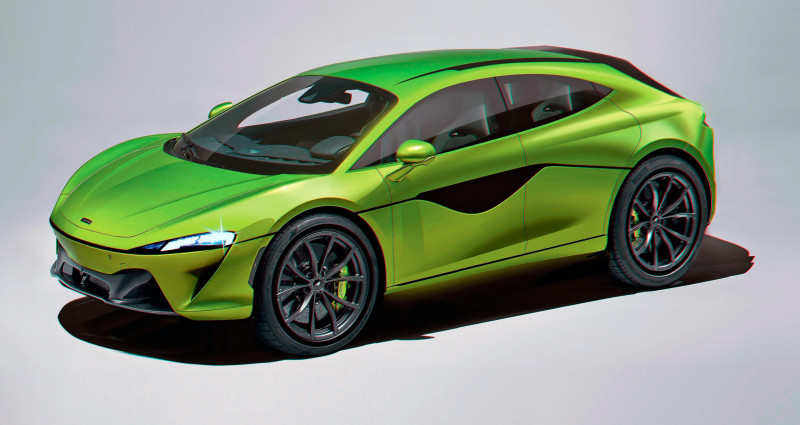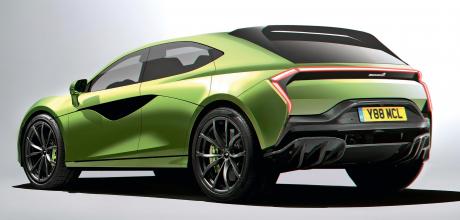2024 McLaren SUVs New crossover to be battery-electric
McLaren is latest supercar maker to succumb to SUVs. Woking to follow rivals in chase for big profits; new high-riders will be electric-only.
EXCLUSIVE: McLAREN’S NEW CROSSOVER - Yours for £350k
McLaren is working on a brand-new high-performance crossover – a project that directly contradicts its previously declared intention of only ever building supercars and hypercars.
McLaren’s shock SUVThe car they said they’d never make

McLaren’s determined to stay true to its traditions of compactness, light weight and sophisticated aero
The new crossover, on course to hit the market in the second half of this decade, will be a fully battery-electric proposition, not a hybrid, and will never be available with a combustion engine. McLaren is understood to be eyeing a single model to begin with, but past practice suggests different specifications and power levels will be offered in time, similar toAston Martin with the DBX.
The new McLarens are believed to be relatively low, compact, dual- or tri-motor, four-wheel-drive designs offering exalted performance levels likely to match Aston Martin’s recently launched V8 DBX 707, currently billed as the world’s fastest SUV. Their size and complexity, plus the cost of what will undoubtedly be top-end battery technology, are likely to push prices well beyond the £250,000 level of McLaren’s current production sports cars, perhaps closer to £350,000. McLaren’s radical change of heart about crossovers is undoubtedly a result of the sales success of its rival performance brands, whose existing crossover and SUV models already heavily outsell their lower-slung models and generate most of their profits. Porsche, for example, delivered more cars than at any point in its 91-year history in 2021, with the Macan SUV and larger Cayenne together accounting for well over half of its 300,000 sales, while the 911 sports car accounted for just 38,464.
It’s waiting for the reduced size and weight and improved energy density of solid-state batteries
It’s a similar story for Lamborghini, whose Urus SUV outsold the Huracán supercar in 2021 at a rate of around two to one. The DBX made up half of Aston Martin’s global sales in the same period, its first full year on sale.
Even Ferrari, easily the most profitable supercar manufacturer of all, is within months of launching its own crossover, the Purosangue (see overleaf), although that will appear at first powered by a normally aspirated V12.
Perhaps the clearest guide to Woking’s changed intentions is the imminent arrival of a new CEO, Michael Leiters, a German engineer who spent more than a decade at Porsche overseeing the gestation of the highly successful Cayenne and Macan SUVs, then joined Ferrari in 2014 as chief technical officer – ideal timing for the design and conception of the Purosangue.
His predecessor, Mike Flewitt, who presided over McLaren’s successful first decade, was the executive most often quoted on the company’s lack of interest in crossovers and SUVs. He stepped down abruptly and without explanation late last year, about the time a new management team was installed to run the wider McLaren Group.
Although McLaren’s planners are undoubtedly well aware of the success of high-performance crossovers that are already in production, insiders say the company is determined to stay true to its well-established traditions of performance efficiency through compactness, light weight and sophisticated aerodynamics.
This is understood to entail waiting for promised improvements to batteries – specifically the reduced size and weight and improved energy density promised by solid-state technology (once hailed as a “game-changer” for lightweight performance cars by Flewitt) – that will most likely be available from around 2028.
At present, McLaren has no official comment about its crossover plans, although insiders have acknowledged “an appetite for the idea”. The company is believed to have its hands full with the imminent launch of the long-delayed Artura plug-in hybrid supercar (driven) while it awaits Leiters’ arrival early in July.
Recent trademarks filed by McLaren, however, hint at a continuation of the naming theme established by the latest additions to the ranks (Speedtail, Senna, Elva, GT and Artura), which have shunned the numerical designations Woking had used since launching the MP4-12C in 2011.
Most recently acquired by McLaren are trademarks for the names Solus, Aonic and Aeron, the latter meaning ‘mountain of strength’ and therefore potentially best suited to a larger and more lifestyle-friendly model.


